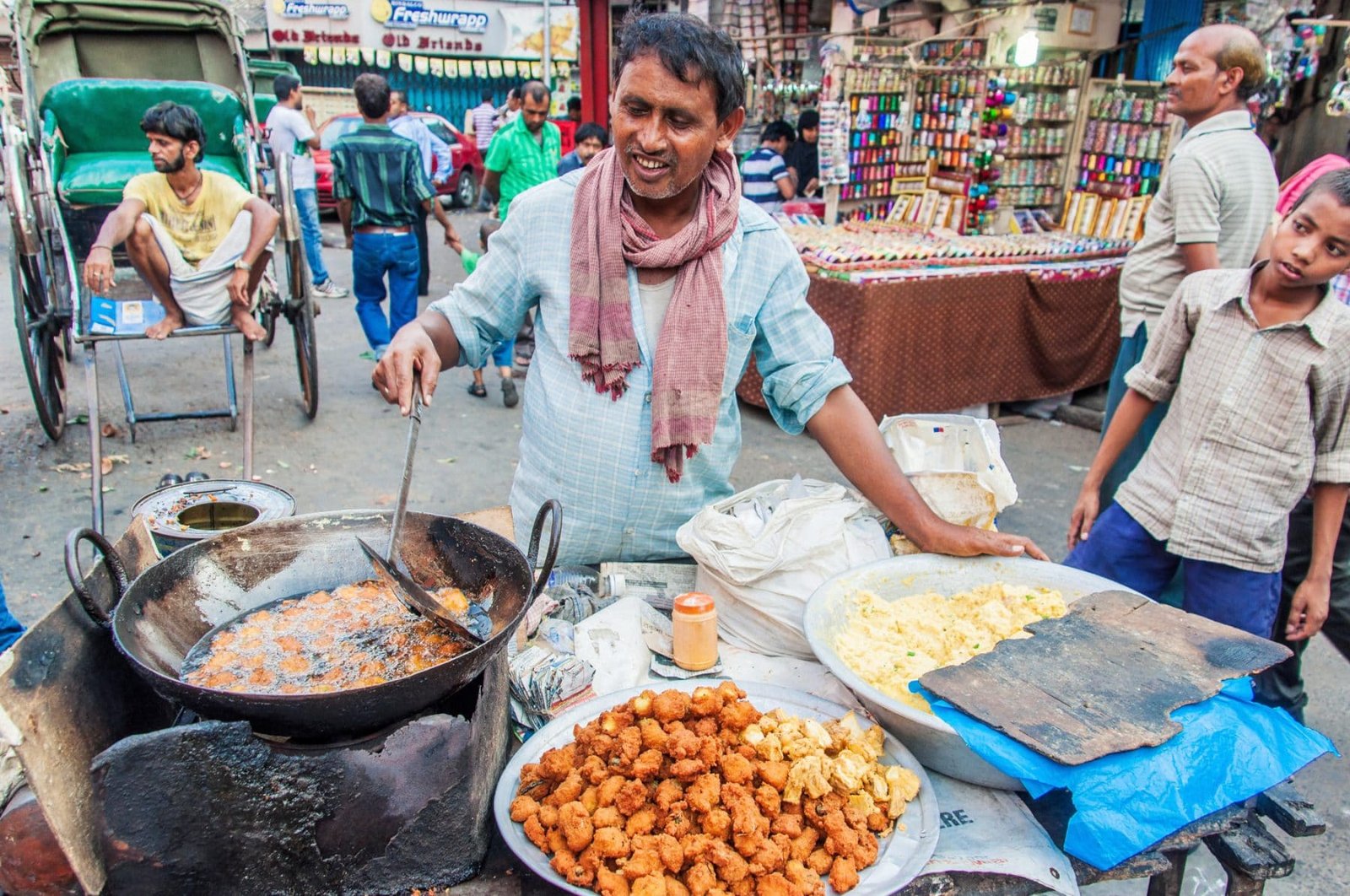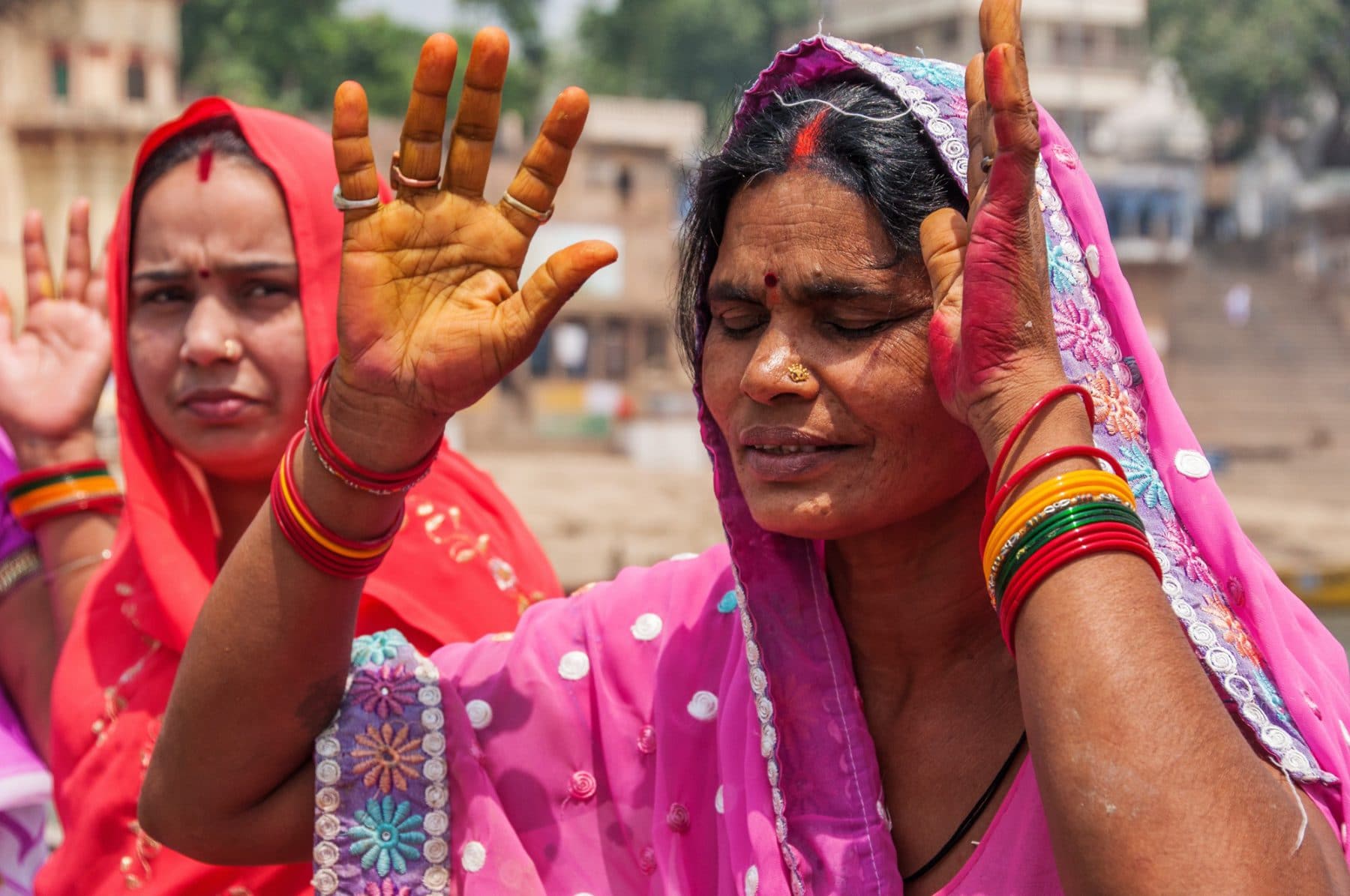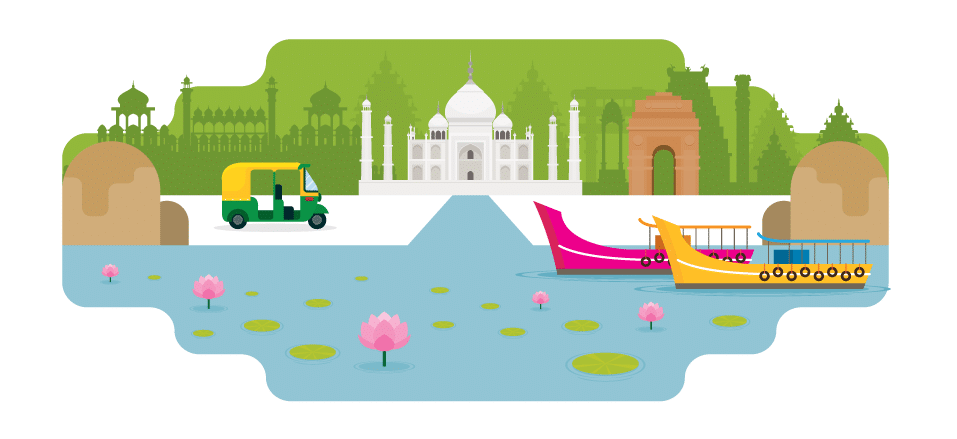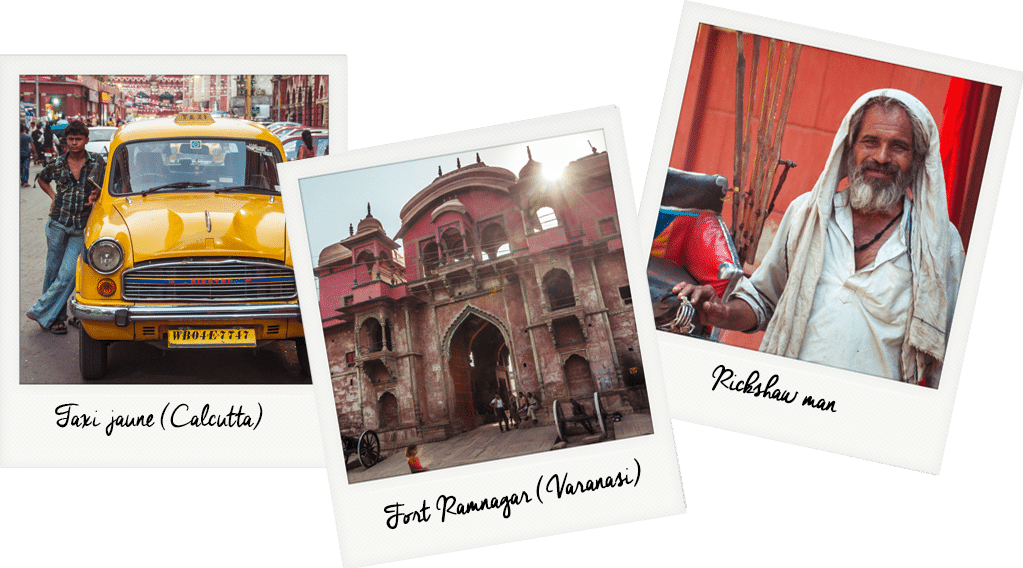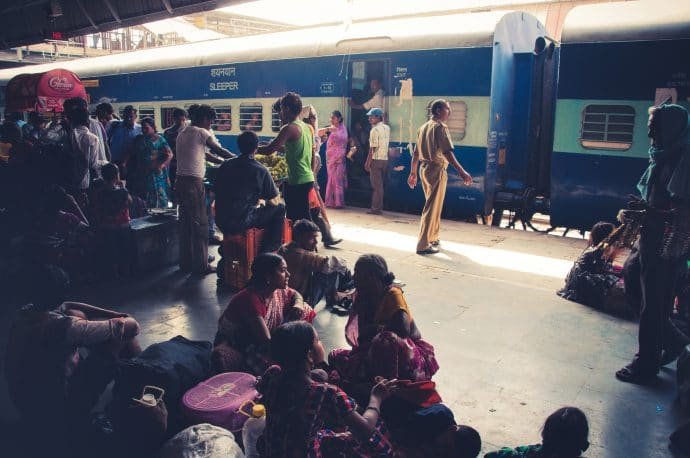Why visit India?
I think we could write a novel on this question, or, failing that, an entire thesis on the particularity of a trip to this country. multiethnic, which fascinates as much as it can repel.
India, in all its diversity, is a blend of flavors, colors, and aromas. It's an ode to life and death. It's joy alongside sorrow, a land brimming with ancient treasures, and breathtaking natural beauty.
Having become the world's most populous country, India remains disarmingly hospitable, while also exhibiting stark regional disparities. It boasts a mosaic of ethnicities, languages, and religions (Hinduism being the majority), and is also home to Bollywood, one of the world's most productive film industries. Furthermore, it is the cradle of Buddhism and Hinduism, a spiritual land par excellence.
Yes, India can be "difficult" in places: density, noise, visible poverty, heat… especially in parts of the North. But reducing the country to that would be to miss its diversity, its creativity, and its capacity to evoke lasting emotions.


It so happens that our experience took place precisely in one of the poorest regions of the country, the northeast, and more specifically Bihar, where approximately 50% of the population lives below the Indian poverty line.
But that didn't put us off: we would even be willing to come back and explore the ghats of Varanasi in more detail.
India is an XXL and multifaceted journey: you go from fervor to contemplation in just a few hours by train.
If I had to give a few key points among the sites that are worth a visit:
- Green south (Kerala), great temples of Tamil Nadu, Pondicherry “in the French style”.
- Archaeological treasures of Hampi, caves of Ajanta/Ellora, stepwells of Gujarat.
- Rajasthan & Sacred North: Jaipur, Jodhpur, Varanasi, Taj Mahal.
- Himalayas & Northeast: Ladakh, Kashmir, Assam & Nagaland.
- A culture that is thousands of years old, diverse and vibrant.
- Budgets are often advantageous outside of peak periods and ultra-touristy areas.
- A fragrant and varied cuisine (if you like curries and spices).
- A generally warm and curious population towards travellers.
- A wide variety of landscapes: Himalayas, sea, countryside, deserts, jungles.
- Dirt and poverty are harsh and clearly visible in places (especially in parts of the North).
- The journey can sometimes be challenging (heat, crowds, noise, emotional intensity).
- Logistics and timing that require flexibility and patience.
For a tourist trip, the French have inevitably need a visa. In most cases, the simplest solution remains the e-Visa, requested online before departure.
100% online application on the official website: https://indianvisaonline.gov.in
- Possible durations : 30 days, 1 year or 5 years (multiple entries).
- Maximum stay. : 90 days per entry.
- RRP : ≈ $10–$80 depending on the formula + bank fees.
- Time limit : usually 3–4 working days.
- Documents : square passport photo + passport scan (main page).
Upon arrival, head to the counter E-Tourist Visa to obtain the input buffer.
The passport must be valid 6 months after arrival, with 2 blank pages side by side.
Important: The e-Visa only allows entry via 28 airports et 5 ports (Goa, Cochin, Chennai, Mumbai, Mangalore).
Land entry is not possible. with this visa.
"Classic" visa
Important — France: since 1st July 2025the centers VFS Global in France no longer processes visa applications for IndiaYou now have to go directly through theEmbassy of India in Paris. The process is similar to that of the e-visa, since the initial application is made via the same website of the Indian government portal (https://indianvisaonline.gov.in/).
For the future, travelers must now book appointments directly online on the website. appointment.eoiparis.com and submit their complete application to the consular counter. You can also get help through intermediary services such as action-visas.com
When to choose a standard visa?
- Starter by land (e.g. Nepal → India).
- Stay in more than 90 days.
- Multiple entrances very close together.
Price :
- 3 or 6 month visa / multiple entries: € 105.
- 5-year visa (rare, to be confirmed by the Embassy): ≈ €200.
- Application by mail: € 25.
Time limit : 4 to 10 working days (excluding peak periods).
From abroad (e.g. Thailand), similar delivery times via local VFS centers.
Extensions, exceeding limits & important rules
- No extension Tourist visas are possible.
- To stay longer: leave the country (e.g. Nepal) and get a new visa.
- In case of exceeding the limit: fine + mandatory procedure with the authorities → risk of being held up at the airport.
Access to protected areas (RAP / PAP)
Some states or regions require a special permit:
- Arunachal Pradesh, Sikkim (North), parts of Kashmir : RAP / PAP required.
- To ask the FRO/FRRO in India (Delhi, Kolkata, Guwahati, etc.).
- Sikkim: possibility of obtaining a Inner Line Permit at the border (Rangpo) for 30 days.
No more permits required : Assam, Meghalaya, Nagaland, Manipur, Andaman & Nicobar, Lakshadweep.
A veritable "continent-country" with contrasting landscapes, you can imagine that India's weather will vary significantly depending on whether you visit the north or the south in the same month. The country experiences several distinct seasons across different regions; to put it simply, its climate can be divided into three phases:
- dry season and monsoon in a large part of the country,
- double monsoon in the South
- mountain climate in the Himalayas.
As I mentioned, there are significant differences between North and South, but also between coast and interior, plains and altitude, so choosing the right time depends greatly on your choice of route and destinations.
Example of coastal/inland gap Humid heat prevails near the coasts, while the continental north experiences cool winters and very hot summers. At higher altitudes (the Himalayas), winters are harsh, and some roads close when the weather is pleasant in the rest of the country.
Use the guide below to plan your periods according to the zones.
Northern India — Delhi, Rajasthan, Uttar Pradesh (Agra/Varanasi)
- Winter (Nov. → March) Cool to mild, often sunny; fog possible in Dec.–Jan. (delays possible).
- Pre-monsoon (Apr. → June) : intense to extreme heat in the plains (≥ 40 °C possible), dusty winds.
- Monsoon (July → September) : sometimes heavy rain, marked humidity; lulls between showers.
- Good to know : large seasonal variations; cities more visited between Nov. and Feb. for comfort.
South India — Kerala, Tamil Nadu, Karnataka
- Temperatures : warm all year round, moderate temperature ranges; high humidity on the coast.
- Southwest monsoon (June → Sept.) : mainly affects the west coast (Kerala); rough seas, frequent showers.
- Northeast monsoon (Oct. → Dec.) : mainly affects the east coast (Tamil Nadu); sometimes marked rainfall episodes.
- Good to know : the interior/plateaus (Kodagu, Nilgiris) remain more temperate than the coasts.
East & Northeast — Calcutta (Kolkata), Odisha, Assam, Meghalaya
- Winter (Nov. → March) : most breathable season (mild to hot depending on the area).
- Monsoon (June → Sept.) : very marked, sustained rainfall (Assam/Meghalaya = world records for rainfall).
- Off-season (Sept. → Nov.) : possible depressions/typhoons over the Bay of Bengal (especially Sept.–Nov.).
- Good to know : high humidity almost permanently; allow logistical margin for roads/bridges.
Himalayas — Ladakh, Himachal Pradesh, Uttarakhand, Sikkim
- Ladakh short season June → Sept. (open roads/passes), dry air, large day/night temperature variations.
- Foothills (Himachal/Uttarakhand/Sikkim) : pleasant to spring (March–May) and autumn (Sept.–Nov.).
- Winter (Dec. → Feb.) : severe, snow, partial road and mountain pass closures.
- Monsoon (July → September) : risks of landslides depending on altitude/exposure.
- Good to know : always plan for flexibility (weather/road) and thermal protection even in summer.


Best time to visit India
To conclude: India has several climatic regimes. For a "classic" trip (excluding the Himalayas), the The best window of opportunity is from October to March., With a peak between November and February in the north. April–June is often too hot in the North-Central region, and July–September corresponds to the monsoon in much of the country.
- North (Delhi, Rajasthan, Uttar Pradesh) : ideal October → March; April–June very hot; July–September monsoon.
- South (Kerala, Tamil Nadu, Karnataka) : generally December → March; June–September monsoon on the west coast (Kerala) and October–December on the east coast (Tamil Nadu).
- East & Northeast (Calcutta, Assam, Meghalaya) November → March most comfortable; June–September very marked monsoon; September–November sometimes depressions/typhoons on the Bay of Bengal.
- Himalayas (Ladakh, Himachal, Uttarakhand, Sikkim) : Ladakh especially June → September (roads open); Himachal/Uttarakhand/Sikkim Very good March–May and September–November; harsh winter and roads often closed.
WEATHER — Northern India (Delhi, Rajasthan, Agra, Varanasi)
North: "Pleasant winters, scorching summers, pronounced monsoon in July–September."
| Month | Minimum temperature | Maximum temperature | Rain | Features |
|---|---|---|---|---|
| Jan. | 8°C | 21°C | 10 mm | Cool winter weather, possible fog (train/flight delays) |
| Feb. | 11°C | 24°C | 20 mm | Very pleasant |
| Mars | 16°C | 31°C | 15 mm | The heat is starting, but it's still bearable. |
| Apr. | 22°C | 37°C | 10 mm | Intense heat |
| Mai | 26°C | 41°C | 30 mm | Hottest month (can exceed 45°C) |
| June | 28°C | 40°C | 75 mm | Heat + dust, before the monsoon |
| Jul. | 27°C | 35°C | 200 mm | Monsoon |
| August | 26°C | 34°C | 210 mm | strong monsoon |
| Sept. | 25°C | 34°C | 120 mm | End of monsoon, humid |
| Oct. | 19°C | 33°C | 20 mm | Ideal conditions |
| Nov. | 12°C | 28°C | 5 mm | Very good month |
| Dec. | 9°C | 23°C | 5 mm | Fresh, dry |
WEATHER — South India (Kerala, Tamil Nadu, Karnataka)
South: "Warm all year round; SW monsoon (June–Sept.) on the west side and NE (Oct.–Dec.) on the east side."
| Month | Minimum temperature | Maximum temperature | Rain | Features |
|---|---|---|---|---|
| Jan. | 23°C | 31°C | 20 mm | Most stable season (generally dry) |
| Feb. | 24°C | 32°C | 20 mm | Pleasant, moderate humidity |
| Mars | 25°C | 33°C | 40 mm | Rising heat |
| Apr. | 26°C | 34°C | 80 mm | Hot and humid (before monsoon) |
| Mai | 26°C | 34°C | 120 mm | Heat + pre-monsoon thunderstorms |
| June | 24°C | 31°C | 300 mm | Southwest monsoon (strong on the Kerala side) |
| Jul. | 24°C | 30°C | 350 mm | Well-established monsoon (west) |
| August | 24°C | 30°C | 300 mm | Frequent rain, rough seas |
| Sept. | 24°C | 30°C | 200 mm | End of monsoon in the west, still humid |
| Oct. | 24°C | 31°C | 150 mm | Northeast monsoon on the Tamil Nadu side (showers) |
| Nov. | 23°C | 30°C | 120 mm | Unstable conditions remain on the east coast |
| Dec. | 22°C | 30°C | 40 mm | Overall favorable |
WEATHER — East & Northeast (Calcutta, Assam, Meghalaya)
East & Northeast: "Heavy monsoon and high humidity; dry window from Nov. to Mar."
| Month | Minimum temperature | Maximum temperature | Rain | Features |
|---|---|---|---|---|
| Jan. | 13°C | 25°C | 10 mm | Dry and pleasant |
| Feb. | 16°C | 28°C | 20 mm | Good comfort |
| Mars | 21°C | 32°C | 40 mm | Rising heat |
| Apr. | 24°C | 34°C | 90 mm | Pre-monsoon thunderstorms |
| Mai | 26°C | 34°C | 200 mm | Heavy rains begin |
| June | 26°C | 33°C | 350 mm | well-established monsoon |
| Jul. | 26°C | 32°C | 500 mm | Very wet (Assam/Meghalaya records) |
| August | 26°C | 32°C | 480 mm | Heavy rain, maximum humidity |
| Sept. | 25°C | 32°C | 350 mm | End of monsoon, still unstable |
| Oct. | 23°C | 31°C | 150 mm | Gradual improvement (remaining cyclone risks) |
| Nov. | 19°C | 29°C | 30 mm | Pleasant period |
| Dec. | 15°C | 26°C | 10 mm | Dry and comfortable |
WEATHER — Himalayas (Ladakh, Himachal, Uttarakhand, Sikkim)
Himalayas: "Short dry season; Ladakh in summer, foothills in spring and autumn."
| Month | Minimum temperature | Maximum temperature | Rain | Features |
|---|---|---|---|---|
| Jan. | 1°C | 9°C | 40 mm | Harsh winter, snow/closures |
| Feb. | 2°C | 11°C | 50 mm | Cold, limited access |
| Mars | 5°C | 15°C | 70 mm | Gradual recovery (low relief ok) |
| Apr. | 8°C | 19°C | 60 mm | Pleasant spring (foothills) |
| Mai | 12°C | 22°C | 70 mm | Very good for valley/hill resorts |
| June | 14°C | 23°C | 120 mm | Monsoon season begins in the foothills; Ladakh opens up |
| Jul. | 15°C | 22°C | 300 mm | Great for Ladakh; rain/risks elsewhere |
| August | 15°C | 22°C | 320 mm | Ladakh OK; monsoon and landslides possible |
| Sept. | 13°C | 21°C | 180 mm | Light autumn (foothills); Ladakh still OK |
| Oct. | 9°C | 18°C | 60 mm | Very good; end of season in Ladakh |
| Nov. | 5°C | 14°C | 20 mm | Fresh, beginnings of closure |
| Dec. | 2°C | 10°C | 20 mm | Winter has arrived, roads are often closed. |
India is a vast and diverse country, almost a subcontinent. Himalayan mountains, deep jungles, deserts, ancient temples, megacities, tropical beaches… each region has its own culture, climate, and atmosphere. To find your way around, you can divide India into six major areas, each offering a very distinct experience.
This guide covers the major sites in these regions, with simple landmarks to help you understand how to organize your trip.
1) Northern India
Especially the Northwest region, this part of India already boasts many of the country's major sites, including the famous Taj Mahal. Before discussing some typical destinations, I can mention a few common mistakes to make in the North:
- Wanting to do everything in 7–10 days (golden triangle + Varanasi + Amritsar).
- Multiply your check-ins: opt for 2–3 nights per stage.
- Underestimating fatigue (traffic, noise, heat/pollution).


Delhi and the Northern Plains
Around Delhi — a sprawling capital and crossroads of civilizations — lies a region dense with historical sites.
Agra & Taj Mahal
Located 250 km south of Delhi, Agra was once the Mughal capital. There you can discover:
- the Taj Mahal, an iconic mausoleum;
- the red fort of Agra;
- several mausoleums of Mughal dignitaries.
The state of Uttar Pradesh, where Delhi, Agra and Varanasi are located, is also the most visited by Indians.
Agra advice (access & timing):
– From Delhi: express train or road (≈ 3–4 h).
– Timed entries to the Taj Mahal: plan ahead, be there 30–45 minutes before.
– Combine with the Red Fort and Mehtab Bagh (view of the Taj at sunset).
Varanasi (Benares)
The sacred city of Varanasi on the Ganges offers a unique atmosphere: ghats where ablutions and ceremonies take place, ancient alleyways, and an omnipresent spirituality. A must-see in North India.
In Varanasi: to know
– Boat trip at dawn for the lights and the atmosphere.
– Respect the cremation site, no intrusive photos.
– Stay near the ghats to limit travel.
Bodhgaya,
A major Buddhist center, this is where Siddhartha Gautama is said to have attained Enlightenment under the Bodhi tree. It's an important pilgrimage site with a melting pot of international temples from major Buddhist countries (including the Thai temple, where we stayed thanks to Jitima).
Amritsar & the Golden Temple
On the edge of Punjab, near the Indo-Pakistani border, Amritsar is home to the Golden Temple, a resplendent Sikh sanctuary set in the middle of a lake. The Gobindgarh fort can be included in the visit.
Tiger watching (North & Central)
Contrary to popular belief, the best observation spots are not necessarily in Bengal. The most renowned parks are:
- Bandhavgarh (Madhya Pradesh): very well-known, can be combined with Khajuraho.
- Kanha: further south, also excellent safaris.
- Ranthambore (near Jaipur): a logical option if you are doing Rajasthan.
Bandhavgarh also combines very well with Khajurahofamous for its ancient temples and mythological sculptures (including some scenes from the Kama Sutra).
2) The tribal regions of the Northeast
Wedged between China, Bangladesh, Bhutan and Burma, this northeastern enclave remains relatively untouched by tourism, but it is exceptional for its raw nature and tribal cultures.

Assam
- National Reserve of Kazirangaknown for housing the largest number of one-horned rhinoceros in the world.
- Other natural parks, tea plantations, traditional villages.
Meghalaya
A mountainous and very wet region, renowned for its spectacular waterfalls:
- Kynrem Falls
- NohKaLikai Falls, a breathtaking waterfall among the most impressive in Asia.
Arunachal Pradesh
To the north, near Bhutan, the Nuranang waterfalls They extend for over 100m. Little known, but superb.
Tripura
The Unakoti siteThis ancient hill, a site of Shivaite worship, features immense rock bas-reliefs dedicated to Shiva. A little-known but remarkable place.
3) Eastern India & the Bay of Bengal
Although we set out from Kolkata to explore a small part of India, we only scratched the surface (that's an understatement) of this region which offers incredible diversity: delta, mountains, colonial cities, ancient temples.


Kolkata (Calcutta)
A vibrant and cultural city, still marked by the colonial era. Unique atmosphere, varied architecture, lively streets.
Ganges Delta
Le world's largest delta It stretches between India and Bangladesh. A gigantic ecosystem where water structures all local life.
Darjeeling & the Eastern Himalayas
Mountain resorts, tea plantations, views of the Himalayan peaks. The place is famous for its mountain train listed as a UNESCO World Heritage Site.
Odisha
A state that will appeal to lovers of Hindu temples:
- Jagannath in Puri, one of the great temples of the country;
- Lingaraja in Bhubaneswar, an immense religious complex dedicated to Harihara.
- On the coast: nature, beaches and traditional villages.
4) Western India
This is where you find the famous Rajasthan, home to the famous blue city of Jodhpur, although the latter has rather mixed reviews, with some not liking contact with the locals at all and minimizing the interest to just the blue walls.
But fortunately, there's more to Mumbai than that, and if the sheer size doesn't scare you, it's well worth a visit.
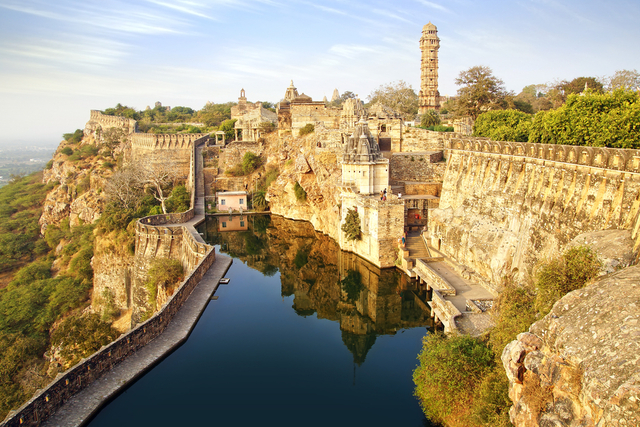
Mumbai (Bombay)
Almost a small country unto itself with its more than 18 million inhabitants, it is the capital of Indian cinema and the economic center of the country.
We visit:
- la gateway to India,
- theElephanta Island and its sculpted caves (UNESCO),
- colonial districts, markets, seafront.
The state of Maharashtra also houses:
- the caves ofEllora et Ajanta (UNESCO sites)
- the caves of Karla,
- the falls of There is,
- the mausoleum of Bibi Ka Maqbara (name sometimes simplified to “Taj Mahal of the Deccan”).
The state also includes the national park of tadoba, an excellent spot for tigers.
Useful information about Mumbai
– Focus on 2–3 neighborhoods per day (distances & traffic).
– Elephanta: allow half a day (boat + visit).
– Good alternative: guided architecture/colonial walking tour.
Rajasthan
The land of the Maharajas is one of the most iconic regions of the country, probably the most visited after Agra.
- Jaipur, the “pink city” (Amber Fort, City Palace)
- Iodine, the “blue city” (Mehrangarh Fort)
- Jaisalmer, a desert oasis with its fort overlooking the Thar Desert
- Palaces, havelis, Jain temples, colorful scenes of life
Le Ranthambore National Park, 160 km south of Jaipur, is one of the best places to spot tigers.

Typical Rajasthan itinerary (9–12 days):
- Day 1–3: Jaipur (Amber, City Palace)
- Days 4–5: Jodhpur (Mehrangarh, Old City)
- Days 6–8: Jaisalmer (fort, desert)
- Option: Udaipur if you extend your stay (lakes & palaces).
Gujarat
A coastal state best known for:
- its stepwells;
- its artisanal traditions;
- its unique culture at the crossroads of several influences.
5) Southern India
This vast area is more tropical, greener, and often quieter than the North. Kerala is one of the most popular states in South India, but Tamil Nadu, being larger, has the highest concentration of interesting places.

Kerala
Kerala is primarily famous for its "backwaters," networks of lagoons where houseboats ply the waters, but it is also:
- Fort Kochi, a strong Portuguese heritage;
- Munnar, tea plantations and green mountain;
- Athirappilly Falls, superb waterfalls.
- Kerala is also mountainous: several peaks exceed 2,500 m.
Goa
Tamil Nadu.
Dravidian temples with multicolored gopurams, historic cities and coastline. Tamil Nadu is one of the most visited states in India.
Must-sees in Tamil Nadu:
- Chennai : former trading post of the British East India Company, with the long Marina beach (13 km).
- kanchipuram famous for its major temples (Kamakshi, Kailasanatha) and its silk saris handwoven.
- Mahabalipuram : UNESCO-listed coastal site with the Shore Temple (8th century) and Five Ratha, superb monolithic temples.
- Pondicherry : former French territory, with a historic district still marked by colonial influence.
- Trichy & Srirangam : Sri Ranganathaswamy temple (one of the largest religious complexes in the world) and the Rock Fort (yes I know… it lends itself to a joke!), a citadel on a rocky outcrop.
- Madurai : the Meenakshi temple, spectacular with its sculpted and colorful towers.
- Kanyakumari : at the southern tip of India, renowned for its spectacular sunrises and the giant statue of Thiruvalluvar.
- Nilgiris & Ooty : mountain resorts, tea plantations, UNESCO-listed train — high-altitude colonial atmosphere.
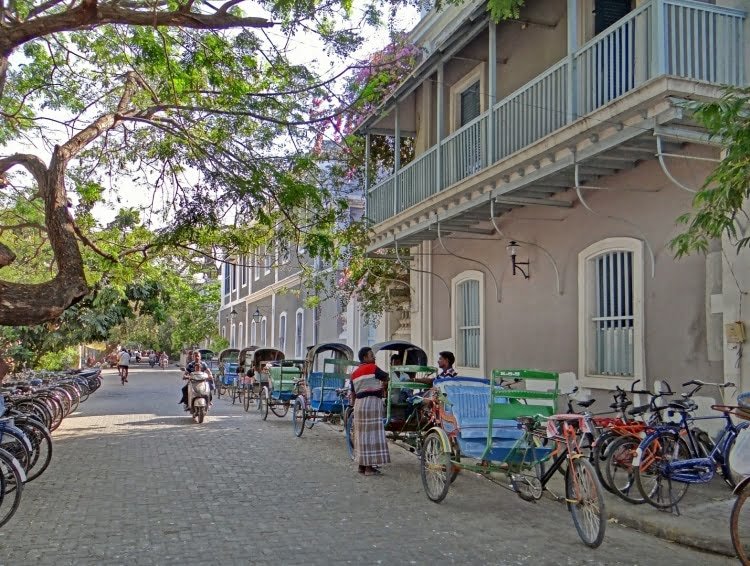
Karnataka
It features major ancient sites (including Hampi), historic towns and beaches that are more secluded than those in Goa.
6) Himalayas & Ladakh
Ladakh forms the Himalayan part of India, a region I've been longing to visit for years! From Leh, you can access:
- the Noubra Valley,
- the Zanskar valley,
- Pangong Lake,
- numerous monasteries (Thiksey, Key in the Spiti Valley).
It is an ideal region for hiking and high-altitude scenery.

India in summary
- Leh: Buddhist monasteries, high-altitude lakes, Himalayan landscapes
- Delhi: capital, convenient base for Agra and Rajasthan
- Darjeeling: mountain resort, tea plantations, mountain railway
- Kolkata: former colonial capital, lively streets, Victoria Memorial
- Varanasi: Ganges ghats and Hindu fervor
- Jodhpur: “blue city” of Rajasthan, Mehrangarh fort
- Goa: old churches, beaches, coastal nature parks
- Kochi (Cochin): gateway to Kerala and the backwaters
- Chennai: access to temples on the east coast and to Pondicherry
Points of interest in India on a map
Here is a personal map to locate and summarize all the important destinations and main places of interest in India:
Given the country's vast size, attempting to explore it all in one trip would require several months. For a shorter stay, the ideal approach is to focus on a coherent region to get a good overview. Here are some realistic itinerary ideas, grouped by major region.
Routes in Northern India
Northern India is home to some of the country's most iconic sites: Delhi and its Mughal monuments, the Taj Mahal in Agra, the palaces of Rajasthan, and the religious fervor of Varanasi. It is also the most culturally diverse region, ranging from ancient imperial capitals to holy cities of Hinduism and Buddhism.
The distances remain manageable, making it easy to combine several stops into a single itinerary without significantly increasing travel time. Whether you have a week or two, you can stick to the classic sights or venture further east to Bodhgaya, Kolkata, or the temples of Khajuraho. It's an ideal region for a first trip to India, offering a good balance between culture, history, and everyday life.
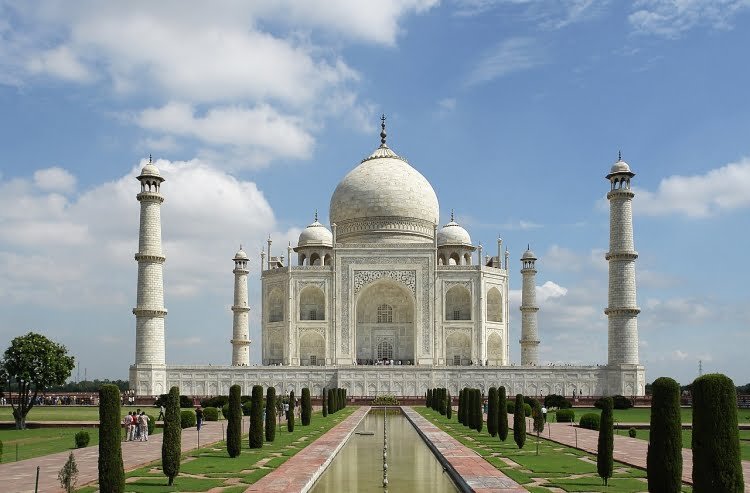

Based on our experience, our journey was divided into these stages:
Kolkata – Bodhgaya – Varanasi – Kolkata
Simple but effective. Since we had to start our tour of this vast country somewhere, we began in Bengal and Uttar Pradesh. The fact that Jitima is Buddhist played a significant role in our choice, as it included a visit to Bodhgaya, a sacred city associated with Buddha himself. The other reason was that Kolkata (Calcutta), our point of entry and exit, is simply closer to Thailand.
Our schedule in detail:
– Day 1: Kolkata (1 night)
– Days 2–3: Bodhgaya (2 nights)
– Day 4: Rajgir and Nalanda (day trip from Bodhgaya)
– Days 5–7: Varanasi (3 nights)
– Return to Kolkata


Alternatively, here are some realistic itineraries depending on the time you have available.
The Golden Triangle: Delhi – Agra – Jaipur (7 to 8 days)
Delhi → Agra → Fatehpur Sikri → Jaipur → Delhi (7–8 days)
In short: The classic itinerary for a first trip to North India. Mughal sites, Rajasthan forts, intense urban atmosphere. Reasonable distances.
Rhythm idea:
- Days 1–2: Delhi (Jama Masjid, Red Fort, Humayun's Tomb)
- Day 3: Agra (Taj Mahal + strong)
- Day 4: Fatehpur Sikri
- Day 5–7: Jaipur (Amber Fort, City Palace)
- Return to Delhi
Complete Rajasthan (2 weeks)
Delhi → Agra → Jaipur → Pushkar → Udaipur → Jodhpur → Jaisalmer → Delhi (14 days)
In short: A grand loop to discover the essentials of Rajasthan: palaces, fortresses, colorful cities and the Thar Desert. A brisk but balanced pace, a very good overview of the northwest.
Rhythm idea:
- Day 1: Delhi
- Day 2: Agra (Taj Mahal)
- Days 3–4: Jaipur
- Days 5–6: Pushkar
- Days 7–8: Udaipur
- Day 9–10: Jodhpur (Mehrangarh)
- Days 11–13: Jaisalmer (desert)
- Day 14: Return to Delhi
Extended North: Bengal → Varanasi → Madhya Pradesh → Rajasthan (15 days)
Kolkata → Bodhgaya → Varanasi → Khajuraho → Orchhâ → Sanchi → Indore → Udaipur → Ajmer/Pushkar → Jaipur → Delhi (15 days)
In short: A more comprehensive variation of your own itinerary. Combines Buddhist sites, ancient temples, ghats, ancient kingdoms, and cities of Rajasthan. Very culturally rich.
A general idea of the order of visits:
- Kolkata → Bodh Gaya → Varanasi
- Khajuraho (temples)
- Orchhâ then Sanchi
- Omkareshwar / Maheshwar (ghats option)
- Udaipur → Pushkar/Ajmer → Jaipur
- End Delhi
Routes in South India
Southern India offers a very different atmosphere from the North: tropical landscapes, palm-fringed lagoons, mountains covered in tea plantations, and grand, brightly colored Dravidian temples. The cities are often more peaceful, the cuisine more flavorful, and the shorter distances make it easy to alternate between beaches, culture, and nature.
The region can be explored in coherent sections: Goa and the Arabian Sea coast, the ruins of Hampi and the palaces of Mysore in Karnataka, Kerala for its backwaters and mountains, and then Tamil Nadu for its monumental temples and colonial heritage. Whether you're looking for a relaxing stay or a more comprehensive itinerary, the South offers a gentle variety of atmospheres, without the frenetic pace of the North.


South – 1 week (beaches + backwaters)
Goa → Cochin → Alleppey (Alappuzha) → Varkala (8 days)
In short: Perfect for a short, relaxing stay: Goan atmosphere, colonial heritage, tropical nature and backwaters, then a break on the sacred cliffs of Varkala.
Rhythm idea:
- Days 1–2: Goa (old town + beaches)
- Days 3-4: Transfer + Cochin (Fort Kochi)
- Days 5–6: Alleppey (houseboat / canals)
- Days 7–8: Varkala (cliff + beach)
South – 2 weeks (west coast)
Mumbai → Goa → Hampi → Mysore → Kerala (14 days)
In short: a comprehensive but feasible itinerary that combines the coast of Goa, the temples and ruins of Hampi, the palace of Mysore and then the nature and mountains of Kerala.
Rhythm idea:
- Days 1–2: Mumbai
- Days 3–4: Goa (beaches + old town)
- Day 5: Transfer Goa → Hampi (long journey)
- Days 6–7: Hampi (Vijayanagara ruins)
- Days 8–9: Mysore (palace + markets)
- Days 10–11: Munnar (mountains + tea plantations)
- Days 12–14: Cochin + Alleppey (backwaters + old town)
South – 2 weeks (east coast + Dravidian temples)
Chennai → Mahabalipuram → Pondicherry → Trichy → Madurai → Munnar → Cochin (14 days)
In short: An itinerary focused on Dravidian culture, ancient temples, the colonial atmosphere of Pondicherry, then the mountains of Kerala. A very good mix of culture and nature.
Rhythm idea:
- Days 1–2: Chennai
- Days 3–4: Mahabalipuram
- Days 5–6: Pondicherry
- Days 7–8: Trichy (Sri Ranganathaswamy)
- Days 9–10: Madurai (Mînâkshî)
- Days 11–12: Munnar (mountain / tea plantations)
- Days 13–14: Cochin
Route in the Indian Himalayas (Ladakh)
Ladakh is one of those regions that feels completely unlike the rest of India. Here, you're already in the Himalayas, with valleys perched at over 3,000 meters, Buddhist monasteries clinging to the mountainsides, and high-altitude lakes with otherworldly colors. The culture, the architecture, and even the pace of life are more reminiscent of Tibet than the northern plains.
The region is only accessible for a few months a year, generally from June to September, when the high-altitude roads are clear. Arriving in Leh (3,500 m) requires an essential acclimatization period, but once this hurdle is overcome, numerous route possibilities exist: the Noubra and Zanskar valleys, Pangong and Tso Moriri lakes, the Thiksey and Hemis monasteries, or the legendary routes to Spiti.

Whether you have a week or two, Ladakh offers a combination of spectacular landscapes, Himalayan culture, and accessible hikes. The relative isolation of the villages also provides a rare glimpse into life at altitude, far from the hustle and bustle of major Indian cities.
Ladakh in 9 to 12 days (summer only)
Leh → Nubra Valley → Pangong → Zanskar (9–12 days)
In short: Himalayan landscapes, monasteries, great lakes, high-altitude valleys. Slow travel, altitude to manage, but a unique experience in India.
Rhythm idea:
- 2–3 days acclimatization to Leh
- Noubra: 2 days
- Pangong: 1–2 days
- Zanskar (if open): 2–3 days
- Return Leh
Long itinerary for Ladakh (14 days)
Leh → Sham Valley → Noubra → Pangong → Tso Moriri → Lamayuru → Leh (14 days)
In short: A long itinerary that combines the major sites of Ladakh: traditional valleys, high mountain passes, iconic monasteries, and the two large lakes of the plateau. The pace remains reasonable thanks to the "nature" stages and nights spent at gradually increasing altitudes. Perfect if you want to discover the region at a leisurely pace and with very diverse landscapes.
Rhythm idea:
- Days 1–2: Leh (acclimatization, Shanti Stupa & Sankar Gompa monasteries)
- Day 3: Sham Valley (village of Likir, Alchi, Basgo)
- Days 4–5: Noubra Valley (Diskit, Hunder Dunes, Turtuk Village)
- Day 6: Return to Leh
- Days 7–8: Pangong Lake (especially beautiful at sunrise/sunset)
- Day 9: Leh (rest break + sightseeing)
- Days 10–11: Tso Moriri (Korzok, lake tour, very isolated setting)
- Day 12: Drive to Lamayuru (monastery and “moonland” landscapes)
- Day 13: Lamayuru → Leh
- Day 14: Return / Domestic Flight
Ladakh + Spiti (16–18 days) — Complete Himalayas
Leh → Noubra → Pangong → Tso Moriri → Keylong → Kaza (Spiti) → Dhankar → Tabo → Kalpa → Shimla (16–18 days)
In short: An exceptional high-altitude route combining the two major Himalayan regions of India: Ladakh and Spiti. It alternates between isolated valleys, perched monasteries, large lakes, spectacular roads, and Tibetan villages. The journey requires good acclimatization and several days of driving, but it is one of the most beautiful routes on the subcontinent for those seeking a complete change of scenery.
Suggested order of visits:
- Leh: acclimatization + monasteries (Thiksey, Hemis, Shey)
- Noubra Valley: Diskit, Hunder dunes, Turtuk
- Pangong Lake: Sunrise/sunset over the lake
- Tso Moriri: Korzok and landscapes of the plateau
- Leh → Keylong road (via high passes)
- Spiti: Kaza, Key Monastery, villages of Langza and Komic
- Dhankar: monastery and high-altitude lake
- Tabo: 10th century monastery (UNESCO)
- Kinnaur Valley: Kalpa and its snow-capped peaks
- End in Shimla (return to Delhi by road or train)
Coming to India
From France, one most often arrives at New Delhi (DEL) ou Mumbai (BOM). There are direct flights and numerous routes with a stopover.
Direct flights from Paris (CDG)
- Paris → New Delhi : direct flights operated seasonally by Air India et Air France (≈ 8–9 h).
- Paris → Mumbai : direct flights operated according to seasons (≈ 8–9 h).
Via a stopover (often more choices)
Frequent and competitive alternatives: via Doha (Qatar Airways) Dubai (Emirates), Abu Dhabi (Etihad) Istanbul, (Turkish Airlines), or via European hubs (Lufthansa, KLM, etc.).

Which airport should you aim for based on your itinerary?
- North / Golden Triangle (Delhi–Agra–Jaipur): land at Delhi (DEL).
- West / Rajasthan & Gujarat : Delhi (DEL) ou Mumbai (BOM).
- South (Kerala, Karnataka, Tamil Nadu): Bengaluru (BLR), Chennai (MAA),
Kochi (COK) ou Thiruvananthapuram (TRV). - East (West Bengal, Sikkim, Odisha): Kolkata (CCU).
- Goa : aim GOX (Mopa) ou GOI (Dabolim).
To help you, here is a map to locate the different international airports allowing arrival with an e-visa (as you can see, there are several options):
Looking for a flight to India
Getting around in India
India is a vast country, best explored by train, effective over long distances, complemented by the intercity buses taxis/tuk-tuks in the city. To save time, there is still a wide choice of airports for the domestic flights.
Some large cities like Delhi, Kolkata or more recently, Jaipur have metros, which can still prove useful but it's an experience to be taken with a grain of salt (to put it simply, avoid rush hour, it's hell...).
Finally, while renting a car or motorcycle remains possible, for most regions it will be of little use and especially not recommended (dense and unpredictable traffic).

Road transport
On a daily basis, you will mainly be using taxis, tuk tuk and rickshawWith its dense population, its traffic is just as heavy. And it's safe to say that the highway code (the what?) doesn't really exist, at least in the northern half of the country (it might be more disciplined in the south).
It's intense, but also tiring because of the incessant noise. The concept? Honk your horn incessantly to "signal" yourself... So every day is a joyful concerto of horns as everyone uses their little beep to make their way through this "organized" chaos.

Buses still remain a useful alternative when trains are not available or operate on more limited schedules.
- National platform: RedBus (redbus.in).
Tip: As with trains, prefer "sleeper/AC" buses for long distances; check off-season timetables.

Intercity buses: state-run networks (online booking)
- Rajasthan – RSRTC :
official reservation ·
RSRTC on redBus - Maharashtra – MSRTC :
official reservation - Karnataka – KSRTC :
official reservation (AWATAR also covers NWKRTC/NEKRTC) - Gujarat – GSRTC :
official reservation ·
GSRTC on redBus - Tamil Nadu – TNSTC/SETC :
official reservation - Andhra Pradesh – APSRTC :
official reservation - Telangana – TGSRTC :
official reservation - Himachal Pradesh – HRTC :
official reservation - Uttar Pradesh – UPSRTC :
book via aggregators:
redBus ·
AbhiBus (UPSRTC page)
Tip: During peak season/weekends, compare the official state timetable with an aggregator (redBus/AbhiBus) to expand available schedules/seats. Keep your PNR and SMS booking ID.
Taxis, tuk-tuks & rickshaws
In the city, it's the simplest option for short trips. The driver's English is not guaranteed.
show the written address (or a Google Maps marker).
- Useful apps: Uber, Ola (olacabs.com).
- Pricing guidelines (indicative): initial charge ~30 ₹, then ~15 ₹/km;
Airport surcharge possible (~100 ₹). - Shared tuk-tuk: very economical on the outskirts; negotiate before getting in.
- Rickshaws: A super economical option, but slow. More for the experience and to make someone happy.
- Half-day/full-day rental: convenient for visiting multiple sites (price varies depending on city and distance).


Motorcycle & car rental
Possible but Not recommended For a first visit: heavy traffic, unclear rules, constant honking. Opt for a driver or public transport.
- International driving permit Recommended + suitable insurance.
- Coastal towns/resorts: Scooters sometimes available, helmet required.
Rail transport
With a combined network of nearly 90,000 km, India has one of the largest networks in the world, making it the ideal mode of transport for crossing the country from one end to the other. Finally, par excellence in the sense of choice, because afterwards it's far from modern, with The trains are quite slow.
Overall, expect some average speeds of 50–70 km/h in standard Express, and 70–95 km/h on the best daytime connections. It remains the ideal mode of transport for covering long distances. On a night train, you'll benefit from sleeper berths (4 per compartment), allowing you to rest and arrive relatively fresh the next day.
The "premium" trains (Vande Bharat, Shatabdi, Tejas, Rajdhani, Duronto) are significantly faster and more regular than the Mail/Express classic.
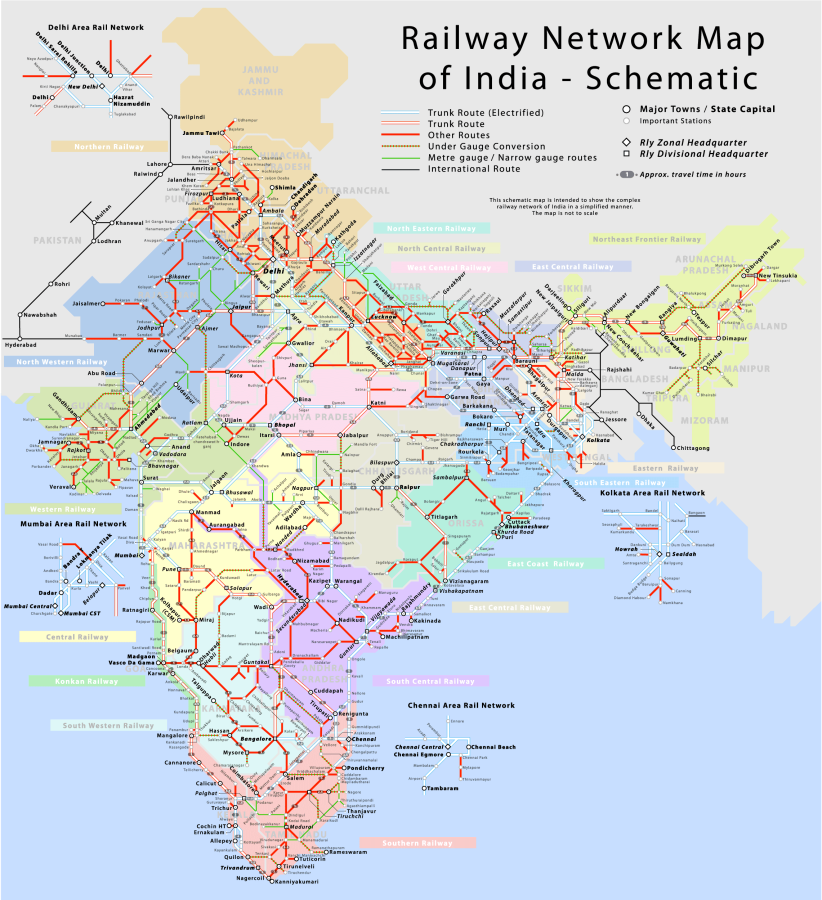
Timeframes & Seasonality
Allow a margin of error: winter fogs (Dec.–Jan., north) and monsoon (June–Sept.) cause delays. Major holidays (Diwali, Holi, etc.) overcrowd the trains: book your tickets in advance.
What to expect at the station
Major train stations (Delhi, Mumbai, Kolkata, etc.) are vast: very long platforms, crowds, and sometimes late platform announcements. Arrive early, follow the displays, and locate the coach position (location of your car) on premium trains.

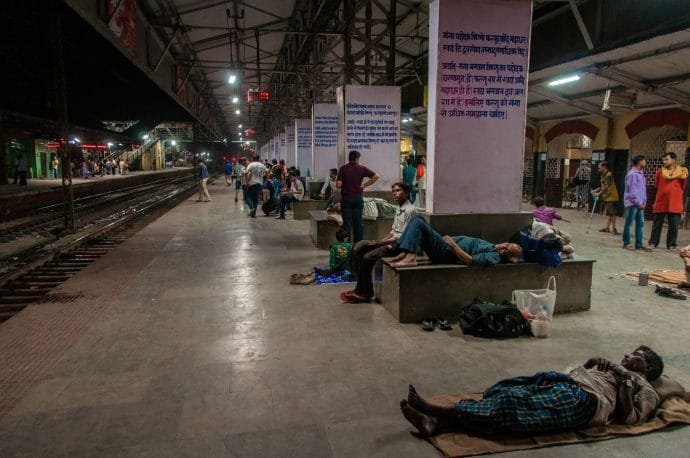
Examples of travel times (order of magnitude)
A huge network, with highly variable speeds.
- Delhi ⇄ Agra (fast): ~1h40–2h30; Express: ~3h.
- Delhi ⇄ Jaipur : ~4:30–6:00.
- Delhi ⇄ Varanasi : ~8–10h (fast); at night: ~10–12h.
- Mumbai ⇄ Goa : ~7:30–10:00 (fast); up to ~12:00 depending on stops.
- Mumbai ⇄ Ahmedabad : ~5–7h (fast/diurnal).
- Kolkata ⇄ Varanasi : ~8–11am.
- Bengaluru ⇄ Chennai : ~4–6h (faster, shorter).
- Kochi ⇄ Trivandrum : ~3–4am.
- Delhi ⇄ Amritsar : ~4:30–6:00.
Classes & comfort on board
- 1A : closed cabin, bedding, air conditioning, maximum privacy.
- 2A : air-conditioned berths (4 + 2 in the corridor) – good compromise between comfort and price.
- 3A : more space, air conditioning, economical.
- SL (Sleeper) : no air conditioning, very cheap, more "rustic".
Tip: Bring a vest/scarf (cool air conditioning), lightweight padlock for luggage.

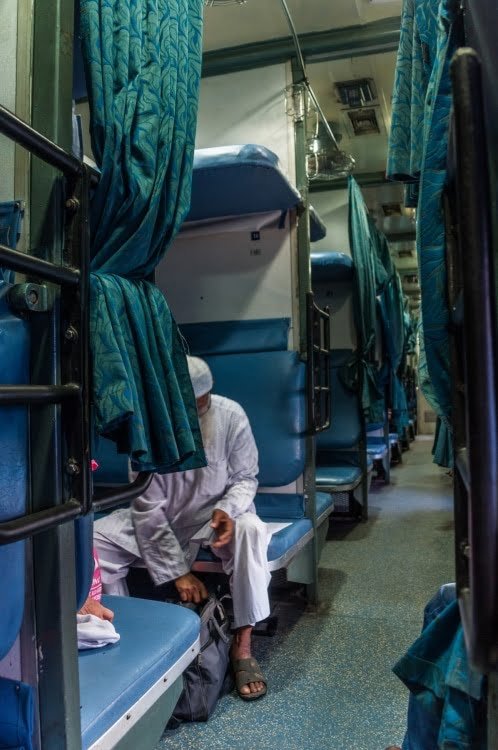
Lines: main axes
- North / Golden Triangle : Delhi ⇄ Agra ⇄ Jaipur (extensions to Jodhpur/Udaipur).
- West : Mumbai ⇄ Ahmedabad / Rajasthan.
- East : Kolkata ⇄ Patna/Gaya ⇄ Varanasi / Lucknow.
- South : Chennai ⇄ Bengaluru ⇄ Kochi / Thiruvananthapuram; Chennai ⇄ Madurai ⇄ Rameswaram; Goa connected to Mumbai and Karnataka.
Travel times vary: prioritize Express/Superfast or night trains to optimize travel time.
Reservations & tickets
You can book through the official website of Indian Railways: https://www.irctc.co.in/nget/
- On the official website, An account is required (international card payments are accepted on many trains). You will see a default tab below the "From" and "To" selectors, labeled "GENERAL." You must go to the "Trains" menu at the top and select "Foreign Tourist Booking" because there is a quota system. The general tab will then change to "Foreign Tourist."
- Pay attention to the names of the train stations. Sometimes, you have to seize the name of the station (like Vasco-da-Gama for Goa, etc.) and not the destination city.
- indicative example Kolkata → Gaya ≈ 1,080 ₹ (~14 €) ~6h30 (depending on class/train).
IRCTC Note (2025) During the first 15 minutes of sales, "early" access is reserved for verified Aadhaar IRCTC accounts.
(anti-fraud measure). Beyond that, everyone can book normally.
stations : possible late postings, crowds — arrive early, especially outside major cities.
- Official apps (NTES fallback) :
Android
iOS - Alternatives (aggregators) :
redRail/redBus
ixigo
ConfirmTkt
Cross-border trains
International passenger rail links remain limited and subject to change.
For most travelers, prefer road or plane to enter/leave the country.
The subways
Modern networks in several major cities: convenient for avoiding traffic jams but avoid peak hours.
- Delhi Metro : extended, includes the airport (Airport Express).
- Kolkata Metro : former north-south line, extensions in progress; historic tram in the centre.
- Bengaluru, Hyderabad, Chennai, Jaipur : recent networks under development.

Some websites with subway maps for major cities:
- Delhi Metro (DMRC) Information, maps, Airport Express — delhimetrorail.com + Airport Express
- Mumbai Metro : lines in service & timetables — mmmocl.co.in
- Kolkata Metro : historical network (N–S, extensions) — official IR portal mtp.indianrailways.gov.in
- Hyderabad Metro : ltmetro.com
- Bengaluru – Namma Metro : bmrc.co.in
- Chennai Metro : chennaimetrorail.org
- Jaipur Metro : State portal (JMRC information)
- Kochi Metro : kochimetro.org
Tip: Contactless cards (smart cards) almost everywhere; Airport Express in Delhi connects the IGI quickly to the center (New Delhi Station).
Shipping
With over 7,500 km of coastline, India does have maritime activity… but it remains very limited for travellers.
Apart from the remote archipelagos, there are virtually no useful ferries on the mainland (no tourist links along the coast, no ferry to Goa, no links to the Maldives).
In contrast, two large Indian archipelagos have regular maritime links:
Andaman and Nicobar Islands
Located more than 1,000 km from the mainland (it's even closer to Thailand!), there are still some long-haul ferries at sea: public passenger ships operate irregularly since Chennai, Kolkata et Visakhapatnam toward Port BlairIf you are motivated and have the time, as the crossing takes approximately 60–70 hours depending on the port and the ship.
Reservations via the ticket offices/portals of the Directorate of Shipping Services (DSS) when the sales open.
- DSS information & e-ticketing: official portal / notices (check sales openings).
- Overview of frequencies/journey times (summary guide): ~66–70 h, ships MV Nicobar, etc.
Fast inter-island ferry (Port Blair ⇄ Havelock ⇄ Neil) :
Private high-speed companies complement the public ferries, with online booking available:
- Makruzz (fast catamarans).
- Green Ocean (outdoor bridge, several classes).
- ITT Majestic (fast, ~90 min depending on route).
Trick Private tickets sell out quickly in high season; arrive at the jetty ~60 min in advance, passports required (checks).
Lakshadweep Archipelago
With its 36 atolls and coral reefs, Lakshadweep is a tropical archipelago, somewhat like the Indian Maldives, located off the coast of Kerala, India.
You have government ferries connecting the continent (especially since Kochi et Beypore) to the inhabited islands; tickets are available through the official Lakshadweep Administration portal or at advertised ticket offices. Schedules and sales openings vary depending on the season and sea conditions.
- Booking & Availability Portal: lakport.utl.gov.in.
- Official sales outlets & contacts (Administration): list of counters in Kochi, Kozhikode, etc.
"Samudram" Tourist Cruise (4 nights/5 days) on the MV Kavaratti with stops in Kavaratti, Kalpeni and Minicoy — package operated by the public body SPORTS Lakshadweep (reservations by period, excluding monsoon).
- Official page of the “Samudram” package: samudram.utl.gov.in.
Air transport
India is a vast country, and depending on your itinerary, flying can save valuable time. Domestic flights are plentiful, generally reliable, and remain affordable, especially when booked in advance.

Among the main airlines for domestic flights, you have the following choices:
- IndiGo — India's main company, very reliable, extensive domestic network.
goindigo.in - Air India — national airline. Several domestic routes, 20 kg of checked baggage on most flights.
airindia.com - Air India Express — Air India's low-cost subsidiary for regional flights (India + Persian Gulf).
airindiaexpress.com - akasa air — a new low-cost company that has been expanding rapidly since 2022, with good feedback and competitive fares.
akasaair.com - SpiceJet — large network but variable punctuality.
spicejet.com
Important note: the company Vistara (formerly premium, resulting from a Tata/Singapore Airlines partnership) was merged with Air India in 2024–2025. Its operations are now integrated into Air India.
Price orders
- Delhi ⇄ Goa €55–110
- Delhi ⇄ Mumbai €40–80
- Bangalore ⇄ Kerala €30–60
- Mumbai ⇄ Kolkata €60–120
Prices vary depending on the season and offers. Checked baggage is often an extra charge on low-cost airlines.
Major international airports
Here are the main points of entry if you are arriving from abroad:
- New Delhi — Indira Gandhi International Airport (DEL)
- Mumbai — Chhatrapati Shivaji Maharaj (BOM)
- Bengaluru — Kempegowda (BLR)
- Chennai (MAA)
- Kolkata — Netaji Subhas Chandra Bose (CCU)
- Hyderabad — Rajiv Gandhi (HYD)
- Kochi (COK)
- Goa (GOX) — new Mopa international airport
Delhi and Mumbai airports offer the most direct international connections from Europe.
Main airports for domestic flights
The internal network is extensive; among the most convenient hubs are:
- Delhi (DEL) — major northern hub & Himalayas
- Mumbai (BOM) — connections to the entire west-central region
- Bengaluru (BLR) — ideal for Karnataka, Tamil Nadu, Goa
- Kolkata (CCU) — access to Bengal, Assam, Northeast
- Hyderabad (HYD) — south-central network
- Chennai (MAA) — Tamil Nadu & Sri Lanka
- Kochi (COK) — Kerala & Lakshadweep
- Port Blair (IXZ) — Andaman Islands hub
Practical tips for domestic flights
● Book early
Prices vary rapidly: +20 to +40% in the 10 days prior to departure, especially on the Delhi ⇄ Goa, Mumbai ⇄ Kerala, Delhi ⇄ Ladakh routes.
● Prefer morning flights
Delays accumulate at the end of the day at major hubs (Delhi, Mumbai, Bengaluru). Before 11 a.m., punctuality is generally better.
● Luggage: beware of low-cost airlines
IndiGo, Akasa Air and SpiceJet do not include checked baggage by default.
Air India generally includes 20 kg on domestic flights.
● Check the departure/arrival airport
In Goa (Dabolim vs Mopa) or Mumbai (T1 vs T2), several terminals can be confusing. Allow extra time if you're connecting to a train.
● Connections between flights
For a change in Delhi (DEL) or Mumbai (BOM), plan at least 2 hours (3 hours if checked baggage) for the connection.
● Himalayan side timetable
Flights to Leh (Ladakh) or Srinagar are heavily dependent on the weather: there is a risk of cancellation in the late afternoon, hence the advantage of booking in the morning.
● Avoid peak periods
During Indian public holidays (Diwali, Holi, regional festivals), punctuality decreases. If possible, avoid these dates for travel on busy periods.
● Registration
Check in online as soon as it opens (24–48 hours in advance). Some airlines charge for seat selection if done at the airport.
● Documents
A passport is required for foreign travelers, even for domestic flights. E-tickets on smartphones are accepted.
India is such a unique country that it struggles to attract foreign visitors. Recent figures show an average of "only" 10 million visitors, which, compared to the country's size and wealth, is a small number.
However, thanks in particular to its domestic tourism, India has developed a substantial hotel network, even if this can lead to very different experiences. Ultimately, as everywhere, you can find absolutely everything in India, from the most basic to the very comfortable.
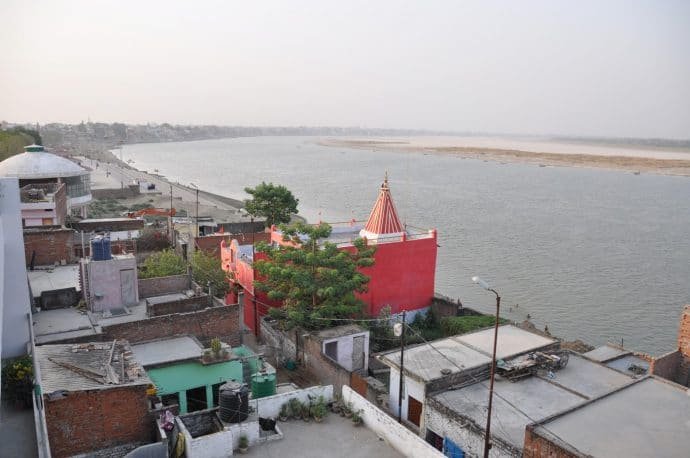
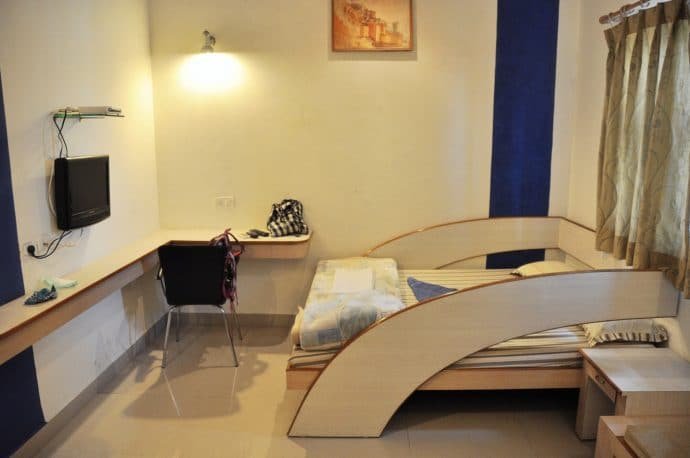
In our case: we started from a small, "basically decent" room in Kolkata, spending nights on a simple plank in a temple without a blanket... then a nice 3-star hotel to finish.
By paying the right price, you can easily find clean and perfectly adequate rooms. One of our best value-for-money options remains the Rahul Guest House in Varanasi, which can be found for under €20 a night. We also chose it for its terrace overlooking the Ganges. But it's a bit far from the main ghats. An interesting option for this city would be the Triveni International.
Conversely, our "hole-in-the-wall" in Kolkata — theHotel Esplanade Chambers — was convenient because of its location (the reason for the choice, in fact), but a little expensive for what it offered: a tiny and slightly creepy elevator, a slightly damp room and average cleanliness, although in the Indian context it remained acceptable.

Our most beautiful room, upon returning to Kolkata, was at the Fortune House (from €40 per night), where a convenient and central location was also prioritized. If being a bit out of the way doesn't bother you too much, there's the Barsana Boutique Hotel which seems to be a good place.
Generally speaking, for a reasonably decent single room, expect to pay at least €20–25. Below that, you'll have to accept sometimes very basic standards. For travelers with a more comfortable budget, the country also has more comfortable hotels, with prices in the €60–80 range. Beyond that, you can also find rooms in legendary establishments; I'll mention one: the Taj Mahal Palace in Mumbai.
Finding good accommodation in India
- Recent reviews (< 3–4 months) Read 5–6 negative and positive reviews. Be wary of old reviews that no longer reflect the current situation.
- Cleanliness & Linen Ask if the sheets/towels are changed daily. Check the actual photos from the travelers.
- AC vs. fan In the city and during the summer, air conditioning changes everything (and the budget). Please specify. “AC room” ou “non-AC” according to your expectations.
- Electricity & hot water : ask if there is a backup inverter/generator in case of a power outage and geyser (water heater) for the shower.
- Location : close to the train station/ghats/bazaars? Check reviews about nighttime noise (horns, dogs) and the safety of the area.
- Payment & taxes Some establishments prefer cash. Check that the displayed price includes VAT/GST and service charges.
- formalities A passport is often required at check-in (scan/photocopy). Opening hoursearly check-in often strict.
- Peak periods Diwali, Holi, Christmas/New Year, long weekends and local high seasons raise prices; book early.
- Useful services : luggage storage, filtered water (RO), stable Wi-Fi, rooftop/restaurant, train station/airport transfer, 24/7 reception.
- Cancellation policy : opt for free cancellation when the itinerary is not fixed.
Price benchmarks (indicative) : decent room from 20–25 €mid-range 35–60 €, “heritage” hotels and palaces starting from €120+ depending on the city and the season.
To book a hotel in India, I refer you, as usual, to the search tool:
Change : The Indian rupee (INR, symbol ₹, abbreviated Rs). Banknotes range from ₹10 to ₹2,000 (the most commonly used denominations are 20, 50, 100, 200, and 500). Coins exist but are not widely circulated, depending on the region.
Conversion reference (indicative): For quick mental calculations, think “₹100 ≈ €1”.
Quick examples – 250 Rs ≈ €2.50 • 600 Rs ≈ €6 • 1,500 Rs ≈ €15
Rates vary: check before you go.
- Cards (Visa/Mastercard) : fairly well accepted in mid-range and high-end hotels/restaurants, modern shops; small surcharge possible.
- Local species : essential for transport, small restaurants, tips and markets.
- ATM : frequent in town; withdrawals often capped, fees possible (from the local bank + your bank).
- UPI / QR : very widespread in India but often reserved for local accounts; do not rely on it without an Indian solution.
- Change : avoid heavily damaged banknotes; keep small bills for rickshaws and tolls.
Trick : keep one pouch with 10/20/50/100 for small expenses and rickshaws, and another with 500 Rs for accommodation.
Price benchmarks
Accommodation
- Small budget (simple dormitories/guesthouses): €10–25 (≈ ₹900–₹2200)
- Medium (2–3★/well-located shops): €35–70 (≈ ₹3,000–₹6,000)
- Comfort/Luxury (4–5★, palaces/heritage): €100 and + (≈ ₹8,500 +)
Meals & drinks
- Small local restaurant / thali : 1,5–4 € (≈ ₹130–₹350)
- Restaurant with air conditioning / shopping center : 6–12 € (≈ ₹500–₹1000)
- “International” restaurant : 12–25 € (≈ ₹1,000–₹2,100)
- Café : 1–3 € (≈ ₹80–₹250) • Water 1 L (mini-market): €0,2–0,4 (≈ ₹20–₹35)
- Alcohol (depending on state/license): beer €2–5 (≈ ₹180–₹450), glass of wine €5–10 (≈ ₹450–₹900)
Transport
- Urban bus/metro 0,2–0,6 € (≈ ₹15–₹50) per trip
- Auto-rickshaw / urban taxi 1–3 € (≈ ₹80–₹250) typical fare
- Trains : short distance SL 2–6 € (≈ ₹170–₹500) • 3A night 8–25 € (≈ ₹700–₹2100) • 2A 15–40 € (≈ ₹1300–₹3400)
- Domestic flight (excluding peaks): €30–90 (≈₹2,600–₹7,700)
- Car with driver (8 hours/80 km) €30–50 (≈ ₹2,500–₹4,200) depending on the city • Fuel : ≈ ₹105–120/L
Key activities (orders of magnitude)
- Taj Mahal (foreigners): ≈ ₹1,100 (≈ €13); mausoleum +₹200
- Amber Fort (Jaipur) : ₹200–₹500 (≈ 2–6 €) • CityPalace : higher depending on the ticket
- Ranthambore (shared safari): ≈ €25–35 (≈ ₹2,100–₹3,000)
- Kerala Backwaters : shikara 10–25 €/h • houseboat €70–150/night depending on comfort/season
- Rishikesh (rafting): €10–20 • Ganga Aarti Varanasi (boat) : 5–10 €
- Ajanta/Ellora Caves : ₹600–₹1,000 (≈ €7–12) depending on site/map
Note: Prices vary considerably by region/season (Himalayas, Goa, religious festivals). Book trains/flights and accommodations in advance during peak season (Nov.–Mar.).
For data updated by city (rent, restaurants, groceries…), check out Numbeo, e.g. for Delhi. or, Busan.
Small budget
Average budget
Comfortable
Small budget
Average budget
Comfortable
Small budget
Average budget
Comfortable
Traveling to India requires a minimum of preparation: hygiene is sometimes precarious, traffic is chaotic, the climate is intense, mosquitoes are present in the wet season… nothing insurmountable, but it is better to arrive informed.
Below is a clear overview based on field experience, without dramatizing.
Travel insurance — is it really necessary?
Many people travel without insurance to save a few dozen euros. However, in Asia — and in India in particular — proper travel insurance is essential.
The guarantees of traditional bank cards are generally limited: often around €10,000 of medical expenses, without sufficient civil liability, and with numerous exclusions.
Dedicated insurance generally covers €200,000 and more, and includes assistance, repatriation, liability insurance, etc.
I recommend you Heymondo Travel Insurance (5% discount via my link).
Transparency: if you subscribe via this link, I will receive a small commission — at no extra cost to you.
Vaccines & health prevention (reminder)
No vaccinations are mandatory to enter India, but several are strongly recommended, depending on the length of your stay, the regions you visit, and your activities:
- Hepatitis A (recommended)
- Hepatitis B
- Typhoid fever
- Rage (useful for long stays / rural areas)
- Japanese encephalitis (prolonged stays in rural areas / rice paddies)
- BCG / tuberculosis: useful if you are passing through Mumbai, Pune or certain cities where resistant strains circulate.
Your doctor or a vaccination center will guide you according to your itinerary.
Mosquitoes: dengue, chikungunya, Zika and malaria
Mosquitoes can transmit several diseases in India.
Depending on the area and the season, the risks vary:
- Dengue : everywhere, especially during the monsoon season (June–September).
- Chikungunya : Delhi, Kerala, Goa, Andhra Pradesh, Gujarat, Karnataka, Maharashtra, Odisha, Pondicherry.
- Zika : present but highly variable from year to year.
- Malaria : low risk in cities, higher risk in rural areas and during the monsoon.
Essential tips:
- Use a good repellent (high concentration).
- Wear light-colored, covering clothing in the evening.
- Sleep under a mosquito net if provided.
- For pregnant women: travel is strongly discouraged without medical advice.
Hygiene: some useful precautions
Hygiene in India often remains rudimentary. This is not surprising, but some habits need to be adapted:
Food and water
- Wash your hands regularly (use hand sanitizer if needed).
- Never drink tap water. Drink only:
– bottled water with a sealed cap;
– or boiled and then filtered water (Lifestraw possible). - Be careful with street-squeezed juices.
- Street food: you be the judge. Officially discouraged, but for experienced travelers, not necessarily riskier than elsewhere.
- Meats / fish: well cooked.
- In Delhi, avoid fish and shellfish between March and October (frequent breaks in the cold chain).
General hygiene
- Even though it's obvious everywhere, avoid swimming in stagnant water.
- Avoid walking barefoot.
- Do not pet stray animals (risk of bite + rabies).
- Seat belt and helmet when possible: valid everywhere, but even more so in India.
Air pollution: a real issue in large cities
New Delhi, Kolkata and Mumbai experience high levels of fine particulate matter (PM2.5), often exceeding 150 on the AQI index.
This can cause irritation, decreased respiratory capacity, fatigue, headaches… especially if you are sensitive.
- Follow the indices day by day: AQICN (see e.g. on Delhi).
- In case of a prolonged peak: N95 or FFP2 masks.
- Avoid intense outdoor physical activity.
Altitude: caution is advised in Ladakh and the Himalayas
Arriving by plane in Leh (3,500 m) without acclimatization can be difficult. Simple tips:
- Rest for 2–3 days before climbing higher.
- Ascend gradually if you arrive by road.
- In case of headaches, nausea, dizziness: go back down, do not persist.
- Minimum physical preparation required before any trek.
Security in India
India is generally a country where one can travel without major difficulties. However, there are some precautions to take, as everywhere.
General advice
- Keep your passport with you or in a safe place.
- Never accept packages from strangers.
- Inform the hotel or your relatives of your travel plans.
- Keep a list of emergency numbers (see below).
Traveling as a woman: realities and precautions
India unfortunately has a high rate of sexual violence, including against foreign female travelers. Accounts vary widely, but caution is advised.
Tips:
- Wear loose-fitting, covering clothing.
- Avoid walking alone at night in sparsely populated areas (even in large cities).
- Avoid being alone with a driver/employee if you do not trust them.
- Trust your instincts: if a situation makes you uncomfortable, move away from it.
To add some nuance, many women travel alone in India and have wonderful experiences. But others may have encountered unwanted stares or inappropriate behavior. This varies greatly depending on the city and region.
Transportation: points to consider
India has a high road fatality rate. Not surprising given the traffic.
- By car / bus : to complete his belt as soon as possible (even at the back). On buses, avoid seats near the front at night.
- By train : Train theft does occur, especially on the northern lines: Varanasi–Delhi, Agra–Delhi, Kolkata–Varanasi, Kolkata–PuriKeep your valuables in a closed bag/lock. in the bed or under the head.
Common scams and frauds
- Fake guides/touts announcing a cancelled train to sell you a private taxi.
- Agencies significantly inflate train ticket prices (prefer the official ticket office).
- Gemstone scams: Rajasthan, Goa, Dharamsala.
- Pickpockets in train stations and tourist areas.
For exemple In Kolkata, our hotel charged us 500 rupees in fees to buy two train tickets (50% of the total price). Not necessarily a "rip-off," but clearly an inflated "tourist" price.
In Delhi, be wary of taxis claiming that “your hotel is closed”.
Sensitive areas and special vigilance
Jammu and Kashmir is classified as an area of heightened vigilance. Sporadic riots, political tensions… Tourists flock there, but the state remains cautious in its recommendations.
In general, the whole of India is classified as being under heightened vigilance, mainly for administrative and national security reasons.
In Delhi, avoid hotels in the Paharganj and Nabi Karim districts, which are known to be unpleasant and sometimes unsafe.
Emergency numbers & useful contacts
- National emergency number: 112
- Police: 100
- Fire brigade: 101
- Ambulance: 102
- Tourist line: 1363 or 1800 11 1363
- Women's assistance: 1091
French Embassy — New Delhi (Official website)



